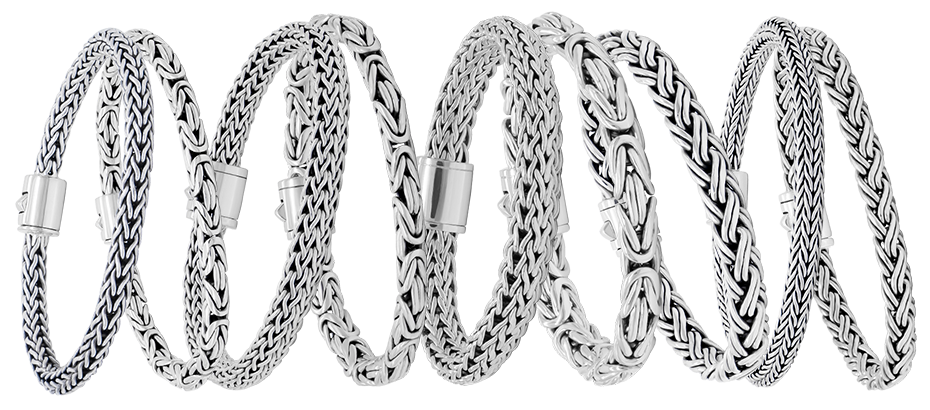No Products in the Cart

Silver has been acknowledged worldwide as a valuable precious metal that is being traded daily in the international market with fluctuating market price just like gold, currency, stock market and crypto.
Sterling silver is also known as Silver 925. The number of 925 refers to the composition of jewelry material which contains 92.5% silver and 7.5% other alloys such as copper. This composition has become the international standard that regulated by FTC (Federal Trade Commission) in the United States.
Why do you not use 100% pure silver instead of 92.5% silver?
The definition of pure silver is for jewelry piece that contains 100% silver or at least 99.9% with maximum 0.1% only trace amounts of additional metals.
Pure silver is very rarely found in the jewelry commerce because it is too soft for a Silversmith to craft a jewelry design. High purity makes it relatively weak and soft, that makes pure silver jewelry be easily dented from the slightest contact with hard surfaces throughout daily routines.
Pure silver appears more valuable than sterling silver, however, its softness renders it unsuitable for crafting quality jewelry piece in a creative design.
The solution is to mix silver with other alloys to create a harder metal that can easily be crafted by the Silversmiths in a creative way, with composition of 92.5% silver and 7.5% other alloys which has become the international standard. That makes sterling silver jewelry a highly durable material ideal for everyday wear.
How do I know if the product I bought is sterling silver instead of stainless steel or other silver-plated metal?
Sterling silver jewelry must be stamped “925” anywhere on the jewelry part, typically at the hidden part of the jewelry, either on the back side or on the clasp, so the stamping mark won’t disturb the beautiful design of the jewelry.
The stamping mark is typically “925” in the United States and has become an international standard, but you may also find “STER” or "SS".